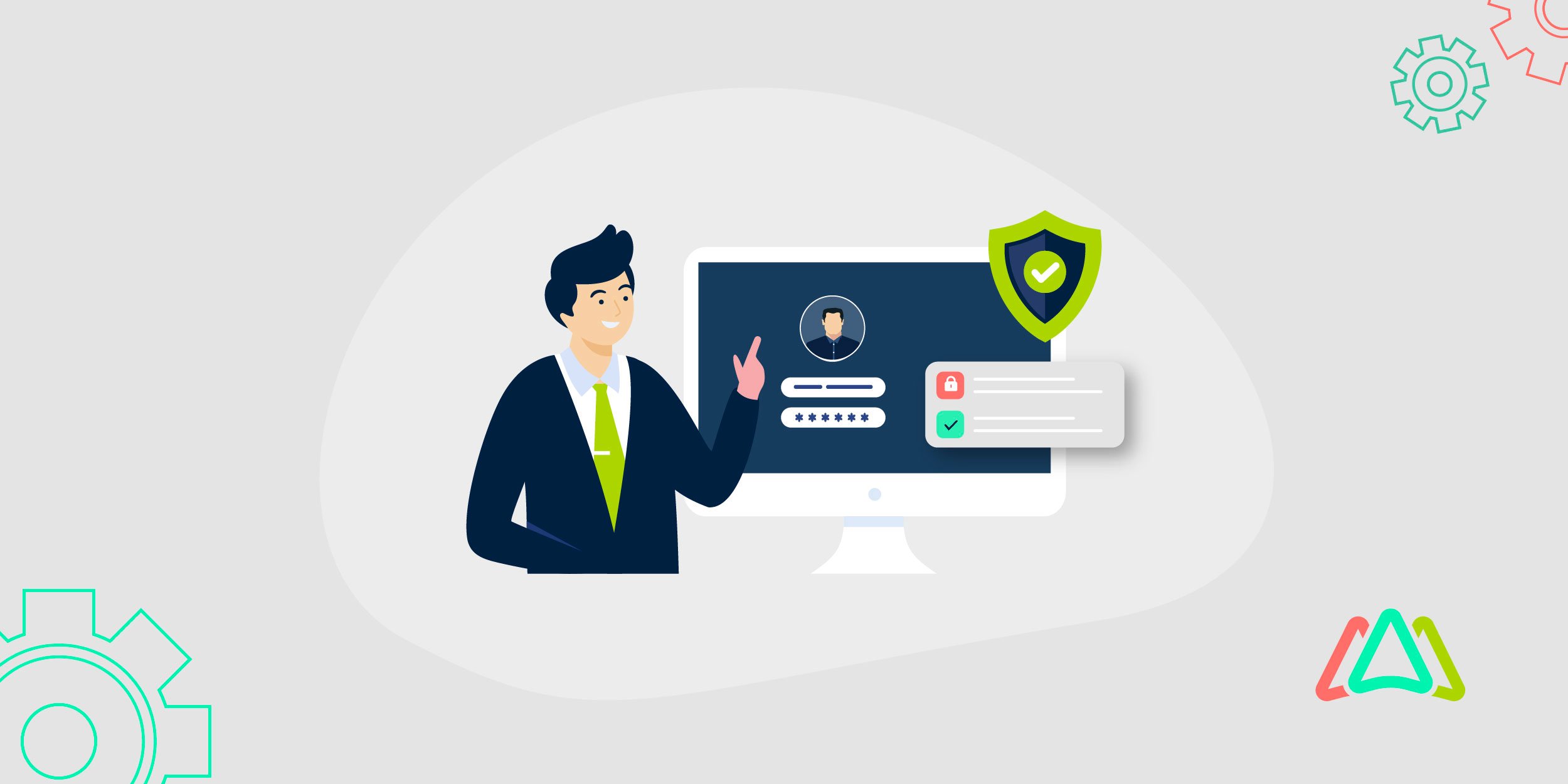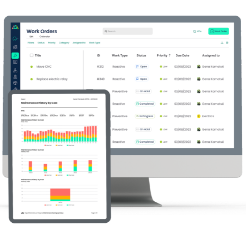
Why You Need a Dedicated CMMS Administrator
Your company recently invested funds and time for new CMMS software, and six months later, it sits unused while technicians return to paper logs and spreadsheets. If this sounds painfully familiar, you're not alone.
According to industry research, approximately 80% of CMMS projects fail to deliver expected results due to low user adoption, lack of planning, or insufficient resources dedicated to the implementation process. Behind every failed implementation is the same frustrating pattern: organizations invest heavily in CMMS software but completely forget to invest in the human expertise needed to make it actually work.
This article explores how dedicated CMMS administration transforms underperforming systems into strategic assets, driving measurable ROI and operational excellence while positioning your organization for long-term maintenance success.

What is CMMS Administration?
CMMS administration is the specialized management of Computerized Maintenance Management Systems through dedicated professional oversight that optimizes system performance, maximizes user adoption, and ensures continuous value delivery. Unlike general IT support roles, CMMS administrators combine technical platform expertise with a deep understanding of maintenance operations and business processes.
A dedicated CMMS administrator operates at the intersection of technology and operations, understanding both the technical capabilities of the platform and the practical realities of maintenance management. This strategic position bridges technology, operations, and business objectives through system configuration, user training, data management, and continuous improvement initiatives that transform expensive software into operational assets.
CMMS Challenges Without a Dedicated Administrator
Organizations face critical challenges that undermine the effectiveness of CMMS and waste significant resources when administration is absent. Here are the common challenges maintenance teams encounter without a dedicated system administrator:
Poor User Adoption and System Abandonment
Without dedicated support and training, users quickly abandon CMMS platforms in favor of familiar manual processes. Teams need consistent guidance, troubleshooting assistance, and encouragement to transition from legacy processes to digital workflows successfully, but this support simply doesn't exist without proper administration.
Data Quality Issues and Reporting Problems
When data is entered carelessly or without clear standards, it’s unreliable. Incomplete, inconsistent, or messy data makes it difficult for teams to pull accurate reports or spot important patterns. This leads to guesswork instead of confident decisions, and over time, it holds back efforts to improve operations or plan strategically.
Inefficient Workflows and Process Misalignment
When a CMMS is set up with generic settings, it often doesn’t fit how the organization actually works. This can slow teams down, create ineffective and inefficient workflows, and leave users feeling frustrated. Over time, that mismatch leads to low adoption, resistance to using the system, and missed opportunities to get real value from the investment.
Integration Failures and Data Silos
Complex enterprise environments require seamless integration between CMMS platforms and existing systems like ERP. Without technical expertise, these integration efforts often fail, creating data silos that limit operational visibility and decision-making effectiveness.
Lack of Strategic Vision and Continuous Improvement
Most organizations treat CMMS as static software rather than an evolving operational infrastructure. Without strategic oversight, systems become outdated, underutilized, and disconnected from changing business requirements, preventing organizations from leveraging advanced maintenance strategies.
Resource Allocation and Training Deficiencies
Organizations often underestimate the ongoing resources required for effective CMMS management. Without dedicated administration, training becomes sporadic, system optimization is neglected, and user support is inadequate, leading to frustration and eventual system abandonment.
How Dedicated CMMS Administration Transforms Operations
A dedicated administrator transforms CMMS software into a customized operational command center that delivers measurable business value. Here's how professional administration addresses each challenge systematically:
System Optimization and Strategic Configuration
Professional administrators design custom workflows that align with existing processes, implement proper user role and permission management for security and efficiency, and create seamless integration with existing enterprise systems to eliminate data silos. This customization ensures that your CMMS supports rather than hinders daily operations.

User Training Excellence and Adoption Strategies
A dedicated CMMS administrator gets to know how each team member uses the system and what kind of support they need. Instead of one-size-fits-all training, they provide guidance that actually fits each role. When questions come up, there’s someone to turn to. And when changes happen, they’re rolled out in a way that makes sense, not all at once or without context. With the right person leading the way, the system becomes easier to use, and adoption feels like progress, not a hassle.
Data Management and Analytics Excellence
Professional data management establishes quality assurance processes that ensure reliable information, creates customized reports and dashboards that provide actionable insights, and implements KPI tracking systems that enable continuous improvement. High-quality data transforms raw system information into strategic intelligence.
Integration Management and System Connectivity
Skilled CMMS administrators know how to connect the system with other key tools like ERP, finance, and procurement platforms. By tying everything together, they help eliminate data silos and cut down on the need for manual entry. The result is a smoother flow of information and a clearer view of operations across the entire organization.
Continuous Improvement and Strategic Evolution
The most effective CMMS implementations evolve continuously through regular system updates, process optimization based on usage analytics, and strategic planning that ensures systems evolve with organizational growth and changing requirements. This commitment ensures sustained value delivery over time.
Performance Monitoring and ROI Optimization
Dedicated administrators implement comprehensive metrics tracking that measures system utilization, operational improvements, and financial benefits. Regular performance analysis identifies optimization opportunities and demonstrates tangible value to executive stakeholders and budget decision-makers.
Building Your CMMS Administrator Strategy
Implementing effective CMMS administration requires systematic planning that addresses your organization's specific requirements and operational challenges.
Assessment and Planning Phase
Start by conducting a comprehensive evaluation of your current CMMS utilization, identifying gaps between system capabilities and actual usage patterns. Assess user satisfaction and pain points to understand barriers to effective adoption. Document existing processes and workflows to identify optimization opportunities that will deliver maximum impact.
Create detailed baseline metrics that establish current performance levels and provide benchmarks for measuring improvement initiatives. This foundation phase creates a roadmap for enhancement efforts that address real operational challenges.
Administrator Profile and Hiring Strategy
Qualified CMMS administrators really know the system inside and out. They understand how to set it up, customize it to fit the organization’s needs, and connect it with other tools and platforms. Their technical know-how is key to making the most of what the software can do.
Database management knowledge is equally critical for optimizing system performance and managing operational data effectively.
Beyond technical skills, effective administrators need business acumen and operational understanding of maintenance management, including work order processes, preventive maintenance scheduling, and regulatory compliance requirements. Communication skills and change management expertise are essential for driving user adoption and managing system transitions.
Implementation and Deployment Framework
Run training sessions that are built around what each role actually needs to know, so users can apply what they learn right away. During transitions, stay close to the team with practical, hands-on support to help them adjust and fully adopt the new, improved way of working.
Address resistance and concerns proactively to maintain momentum and user engagement throughout the implementation process.
For a deployment to truly succeed, it has to consider what users need and what challenges they face. The goal is to make their work easier, not more complicated. When done right, system improvements lead to real, practical benefits, not added frustration.
Performance Monitoring and Optimization
Implement regular performance monitoring cycles that track system utilization, user satisfaction, and business impact metrics. Monitor maintenance cost reductions, asset uptime improvements, and compliance adherence rates to demonstrate tangible value and justify continued investment in professional administration.
Overcoming Common Implementation Challenges
Even well-planned CMMS administration initiatives face predictable challenges that can undermine effectiveness and waste resources.
Hiring Profile Misalignment
Organizations often hire candidates with strong technical skills but limited understanding of maintenance operations, or conversely, maintenance professionals without sufficient technical expertise. The most effective administrators balance both skill sets with proven ability to communicate effectively and drive successful change management.
Look for candidates who demonstrate platform expertise and operational understanding, with track records of successful system implementations and user adoption initiatives in similar organizational environments.
Executive Support and Resource Allocation
When leadership isn’t fully on board, it becomes tough for administrators to make real progress or get people to embrace the system. That’s why executive support is crucial. Leaders need to understand how important good system administration is to the bigger picture, and back it with the right resources, clear authority, and ongoing support to help it succeed.
Regular communication with leadership about administrator activities and achievements helps maintain support and secure ongoing resources for system optimization initiatives that deliver measurable business value.
Scope Management and Role Definition
Clearly define administrator responsibilities to prevent scope creep that dilutes effectiveness and creates role confusion. While administrators should collaborate closely with IT, operations, and management teams, their primary focus must remain on CMMS optimization and user support rather than unrelated activities.
Establish clear boundaries and reporting relationships that enable administrators to focus on delivering maximum value from CMMS investments while maintaining effective collaboration with other organizational functions.
Lean on Your CMMS Provider’s Customer Success Team
One of the biggest resources that a company has when it implements a CMMS is the provider’s customer success team. As the name suggests, these people are driven to ensure that their customers’ users adopt the software so that they get value. The goal of the customer success team is to avoid customer cancellations or churn, and with the objective in mind, they work tirelessly to point users to resources that will make their experience a positive one, and the companies they support see value in the software and recognize the ROI. Customer Success Managers (CSMs) will assist with support tickets, training, onboarding customers, data migration, expanding the CMMS to other departments and locations within the organization, and more. If they are unresponsive and neglect your users, it’s probably a good idea to find an alternative. It’s always recommended when evaluating a CMMS product to look at user reviews and see what their customers are saying, specifically about their customer support. Also, ask for references so you can speak directly with a few of their customers who are in similar industries and match your company profile in size.
See how Click Maint compares with other top CMMS providers.

Conclusion
Managing a CMMS isn’t just about keeping the system running; it’s about helping the entire organization use the technology to work better and stay ahead. When done right, CMMS administration turns what could be just another software expense into a valuable tool that supports smarter decisions, stronger performance, and real business impact.
The question isn't whether your organization can afford a dedicated CMMS administrator; it's whether you can afford to continue operating without one.
Don't let your CMMS investment become another expensive mistake gathering digital dust. Make the strategic decision to unlock your platform's full potential through dedicated professional administration that transforms maintenance operations and drives sustainable business value.
TABLE OF CONTENTS
Keep Reading
As Computerized Maintenance Management Systems (CMMS) become more connected and cloud-based, ...
1 Jul 2025
Edge computing is an innovative technology that enables data to be processed at the source, ...
24 Jun 2025
Facility management has undergone a significant transformation in recent times. Take, for ...
20 Jun 2025
A facility maintenance plan is at the core of a facility’s operations. This organized ...
19 Jun 2025
In the early days, preventive maintenance could be done effectively with a trained eye and a ...
17 Jun 2025
Sticky notes fall off, whiteboard grids get wiped, and spreadsheets never beep when a ...
13 Jun 2025
Handing a slice of your maintenance workload to a contractor is less about “giving up ...
12 Jun 2025
Downtime in enterprise environments doesn’t just mean a stop in operations; it means lost ...
10 Jun 2025
Understanding equipment functionality is crucial for effective repairs. A clear, systematic ...
6 Jun 2025
Maintenance managers know that every unplanned equipment failure is more than a simple ...
5 Jun 2025
What keeps a facility running smoothly? Initially, many of us may zoom in on its equipment, ...
29 May 2025
In today's digital world, every decision needs to pass the test of strategic and operational ...
27 May 2025
The business world is very different from a decade ago. Technological advancements have grown ...
23 May 2025
Picture this: a maintenance technician inspects a complex pump system. Instead of typing a ...
20 May 2025
For most of the 20th century, maintenance teams mainly applied a reactive approach to ...
9 May 2025
Imagine visiting a manufacturing plant where maintenance technicians gather around a large ...
8 May 2025
Maintenance management faces complexities across all industries, escalating with ...
6 May 2025
Ever find yourself checking into a luxury hotel and expecting a relaxing stay, only to find a ...
11 Apr 2025
Organizations are witnessing swift changes in the business environment and confronting a ...
8 Apr 2025
Last month, news outlets and the entire internet was abuzz with the return of NASA astronauts ...
3 Apr 2025





